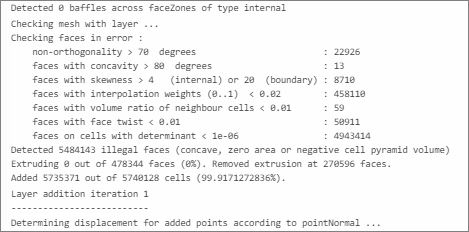Hi everyone,
Just some of my input here. Great discussion and sharing by the way.
With regards to the relative layer sizing, as recommended in the y+ setup that Jousef & I have written (posted a couple of times), relative layer sizing should be off if you want to really control the layers. That way your size will be absolute and as @LWhitson2 has correctly pointed out, this will stop the layers from changing based on the localized mesh where the layers are applied to. As you all should be aware, Snappy is quite inconsistent when it comes to mesh generation even with the exact same parameters and geometry, which leads to the layers being “unknowable” if relative layer sizing is on. For very corase meshes, relative layer sizing is fine as you can get rough results out.
LWhitson2 has also correctly and brilliant pointed out why we need to ensure that the layers should be strictly between 30 and 300. Less will give inaccurate results and more, the same. However, should one need to use values of y+ less than 30, then full resolution is recommended. Usage of y+ less than 30 is usually dependent on the turb model. For my use cases, k-w SST, a full res run requires a mesh of y+ less than 1.
Usage of the wall functions can give you expected flow structures like separation and vortices I believe. It is only the values of these features that may be inaccurate. Another reason is the turbulence model. From my previous work in flow within an urban environment, the commonly used k-eps cannot adequately produce the expected flow structures, k-w sst can even with wall functions applied.
While that is great, I do think that being able to run a 4-5 meshes at the same time is even more incredible!
Absolute tolerance 1e-15? That seems way overkill. Any simulation of moderate complexity will never reach that level of convergence. Most sources I’ve read cited 1e-6 as ideal convergence, so to save yourself some core hours, I recommend that setting. If you’re having trouble converging, other parameters like the the relaxation factors or the gradient schemes can be adjusted on a case by case basis.
The math is interesting. I’ve been looking through them on and off. If I get a grasp on them I will be sure to share with all of you!
Convergence should be checked graphically in two ways, the residual plots and the force plots. As mentioned, for residuals, 1E-6 is ideal, but if you get 1E-5 or even 1E-4 I would say, it is good enough. Force plots wise, a steady-state or oscillatory steady state is sufficient.
Another visual check is the data contours in the post-processor. Example, if you see pockets of pressure abnormalities then you likely need a longer convergence time or your numerical parameters need to be adjusted.
Cheers.
Regards,
Barry

